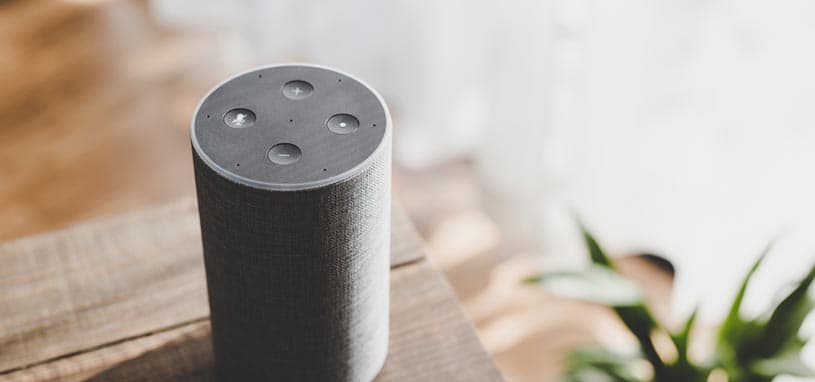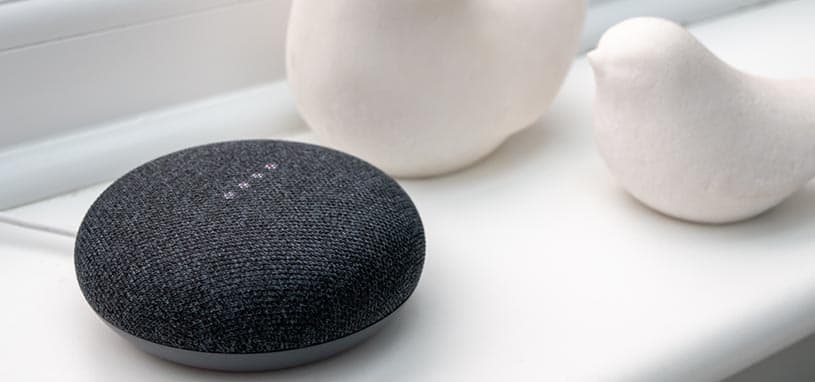How the brilliance of voice controlled home automation speaks for itself
Home automation is all about making life easier for people to live, work, and relax on their own terms. Voice activation is the next natural step in home automation, allowing entirely hands-free interactions with all technology.
This article will take a look back through the history of home automation, the rise of voice controlled home automation, and some exciting new developments in the field.
At Integrated Technologies Australia, our voice integration technology talks the talk. Learn more about our home integration technologies, and see how we put voice integration to work as part of an amazing residential project.
A brief history of home automation
The Internet of Things has seemingly permeated throughout every facet of our domestic and professional lives. However, true home automation came well before the stylised future of The Jetsons was dreamt up. Here are some facts you may not know about our automated history:
- Nikola Tesla created the first remote control in 1898 to operate a toy boat. He actually tricked the crowd into thinking they could shout commands to control the boat — an early glimpse into the future popularity of voice control.
- The vacuum cleaner as we know it today was invented in 1901, and fridges, irons, and washing machines followed soon after.
- The microprocessor was created in 1971, ushering in a huge leap towards affordable home technology,
When it comes to sound and voice, the first instance of its use in home automation was in 1985 via The Clapper, an electrical light switch governed by a short, sharp noise, like a clap. Unfortunately, it was pretty sensitive, and would turn lights on and off when someone sneezed, a door slammed, or a dog barked.
The rise of voice activation in home automation
Being able to talk to the walls was traditionally not viewed as a handy nor healthy skill. But as great works of science fiction like Star Trek, and Phillip K. Dick's Ubik popularised the notion of voice commands, consumers began demanding their own verbal control over technology in the home.
The 2000s and 2010s have been an exciting time for voice control:
- Microsoft integrated speech recognition throughout their Office suite and released Windows Vista, which employed voice recognition.
- Google initiated GOOG-411 in 2007, a telephone-based directory service that would serve as a basis for Voice Search.
- In 2014, Amazon released the original Echo, a voice controlled speaker that allow connection to other smart devices.
The stage was now set for the future as we see it today. As specialists began to use the ever-improving voice control to integrate with other technologies, demand increased among tech savvy consumers.
Voice control in home automation today

Today, home owners and home automation specialists are looking for even more exciting ways to implement voice into the everyday running of the home. Not only can voice control facilitate greater comfort and entertainment, it can also promote ease of use and accessibility.
There are several other reasons why voice control in home automation is a key consideration today:
- As our global population ages, personal independence can be facilitated by using voice control over touch.
- Disabled people have greater quality of life and personal autonomy using voice control around the home.
- As time goes on, the accuracy of voice commands and responses will improve, leading to great efficiency.
- Integration will also improve, allowing voice control to command all kinds of smart household items, including washing and kitchen appliances.
Popular examples of voice activation technology
Let's take a look at some popular examples of modern voice activation used in home automation, and some of the wonderful things that can be achieve will a little creativity.
Amazon Echo Alexa
The original home assistant is constantly being updated and improved to deliver accurate results, beyond the news and weather. Alexa can also play your favourite tracks and playlists with a simple request.
Google Home
It's nice to be connected to the world's greatest library of data. It's also nice to be able to talk to it. Google Home is an expert at searching, but can also help you set reminders, plan your schedule, and access entertainment.
Apple Siri and Homekit
Siri was another pioneer of the voice automation obsession in the home. Homekit builds on Siri, allowing owners to control all of their devices at one time, leading to greater unification around the home.
Full integration of voice control

All of the above devices can be used to control other smart devices around the home. By programming them to respond to specific words and actions, you can create a fully function, hands-free smart home with ease.
When it comes to creating a smart home the opportunities are endless. Voice-enabled assistants can:
- Allow complete control over smart lighting in every single room
- Start home theatre and television at certain times that you request
- Stream podcasts, music artists, and playlists based on your mood
- Control climate devices like fans, thermostats, and air conditioning
- Withdraw automated blinds and invite natural light and heat inside
- Instigate security measures when you leave the home or go to sleep
- Grant entrance to the home and garage from anywhere at any time
- Begin outdoor protocols, like smart irrigation and garden lighting
The possibilities only end at your imagination. Basically, every piece of smart home technology can be defined by a programmable action. Every programmable action can be spoken into the receiver of one of the above voice-assisted AI technologies.
How ITA uses voice control in home automation
Integrated Technologies Australia focuses on fully integrating homes with home automation. Using Crestron integration, and a range of other smart home technologies, we are able to let owners do anything with a few simple words. It's all part of creating a holistic smart home, which we believe is the key to future family living.
If you'd like to see this exciting technology in action, read our case study about a luxurious Hamptons home. The team at ITA employed dozens of smart home technologies throughout every area of the home, inside and out, all governed by voice control. The results are simply astonishing.
Voice commands in home automation and the future. ITA is here to help you get there. You can learn more about our groundbreaking approach by visiting our resources on home automation.
Must Read
ITA on 1 January 1970
Corporate Energy Saving Strategies
ITA provides innovative energy-saving solutions for corporations looking to cut annual energy costs. Get the best value & assurance across your whole corporation. Learn how. ...
Read more